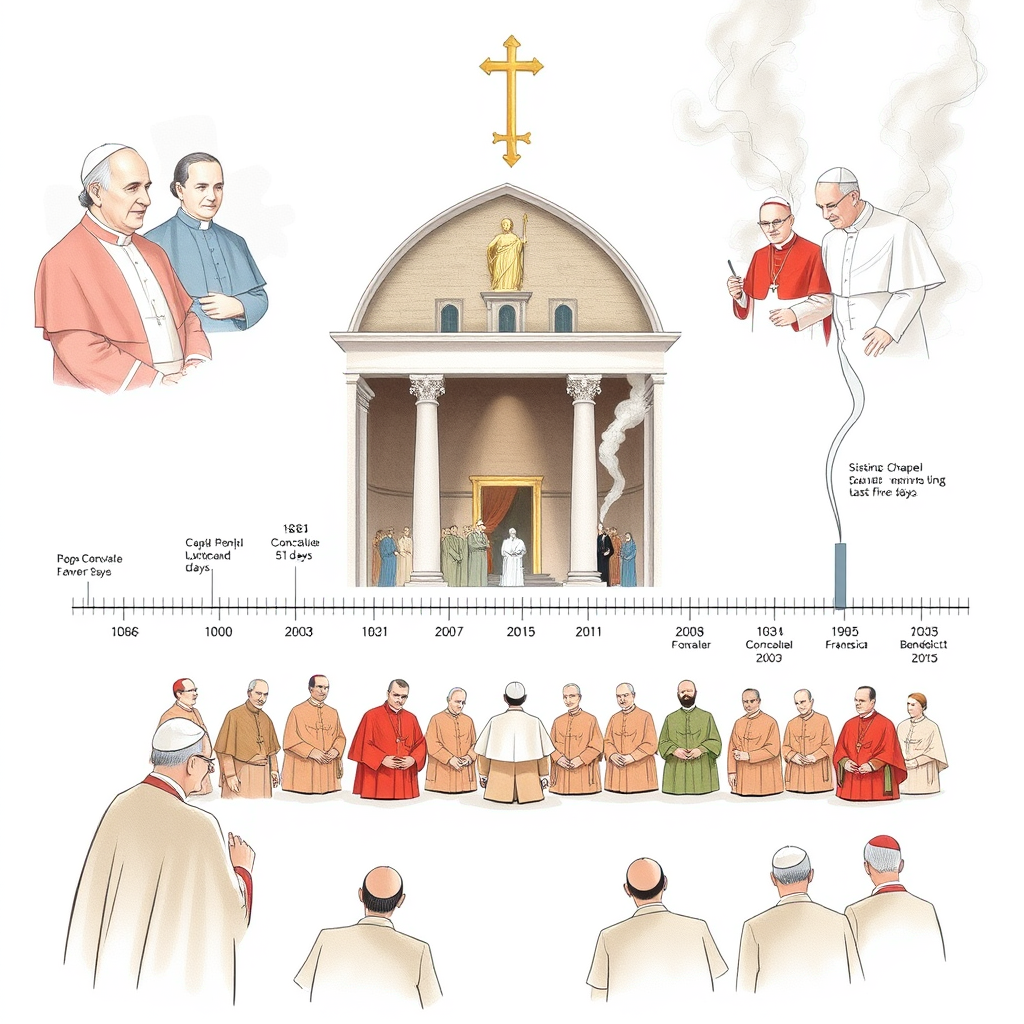'The Shocking Lengths of Recent Papal Conclaves'

Following the passing of Pope Francis on April 21, the Vatican initiated preparations for a papal conclave, a secretive and pivotal process where cardinals from around the globe convene to elect the next leader of the Catholic Church. On Wednesday, May 7, 133 cardinals assembled in the Sistine Chapel for the first round of voting, but failed to reach a decision, as indicated by the black smoke rising from the chapel’s chimney. To secure the papacy, a candidate must garner at least two-thirds of the votes, with a successful election signaled by white smoke.
The conclave process involves multiple rounds of voting each day until a new pope is chosen. Historically, this could theoretically extend indefinitely, with some conclaves lasting for years. However, modern elections have been significantly shorter. The last conclave to extend beyond a week occurred in 1831, when Pope Gregory XVI was elected after 51 days of voting.
The longest conclave in history took place in 1268, following the death of Pope Clement VI. The 17 cardinals involved were divided into two factions, the Guelphs and Ghibellines, leading to a stalemate that lasted an astonishing 1,006 days. The conclave was only resolved when the cardinals were isolated from the outside world. This event led Pope Gregory X to implement rules ensuring future conclaves were held in secrecy and isolation, giving the process its modern name, ‘conclave.’
In recent decades, conclaves have been remarkably swift. Out of the last five, the longest lasted just three days. The election of Pope Francis in March 2013 took two days and five rounds of voting. Similarly, the election of Pope Benedict XVI in 2005 also concluded in two days. In 1978, there were two conclaves: one in August, electing John Paul I in two days, and another in October, electing John Paul II over three days. In 1963, Pope Paul VI was chosen after three days of voting.
While the duration of the current conclave remains uncertain, recent history suggests that a new pope will likely be elected within a week. This efficiency is a testament to the evolving nature of the conclave process, which has streamlined significantly over the centuries. The swift elections of recent years reflect a more decisive and unified cardinal electorate, contrasting sharply with the protracted and divisive conclaves of the past. This modernization is crucial for the Catholic Church, allowing it to respond more promptly to the needs of its global congregation.